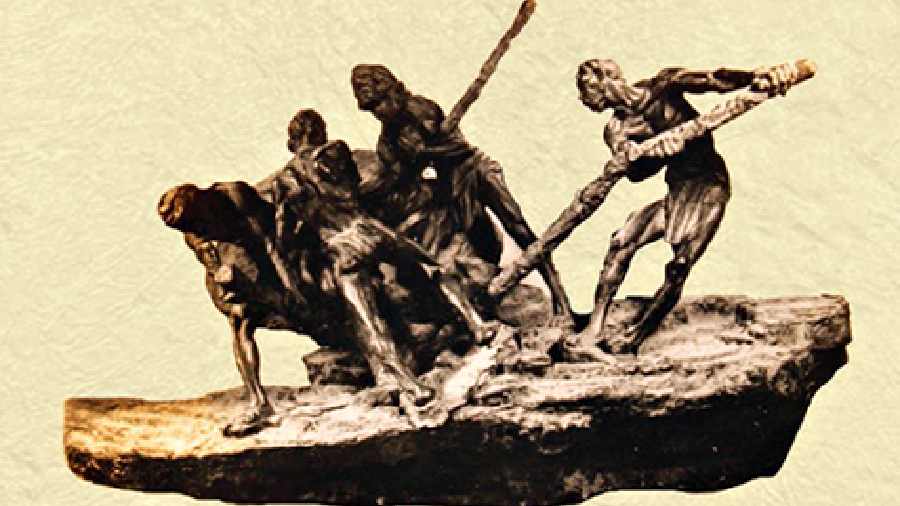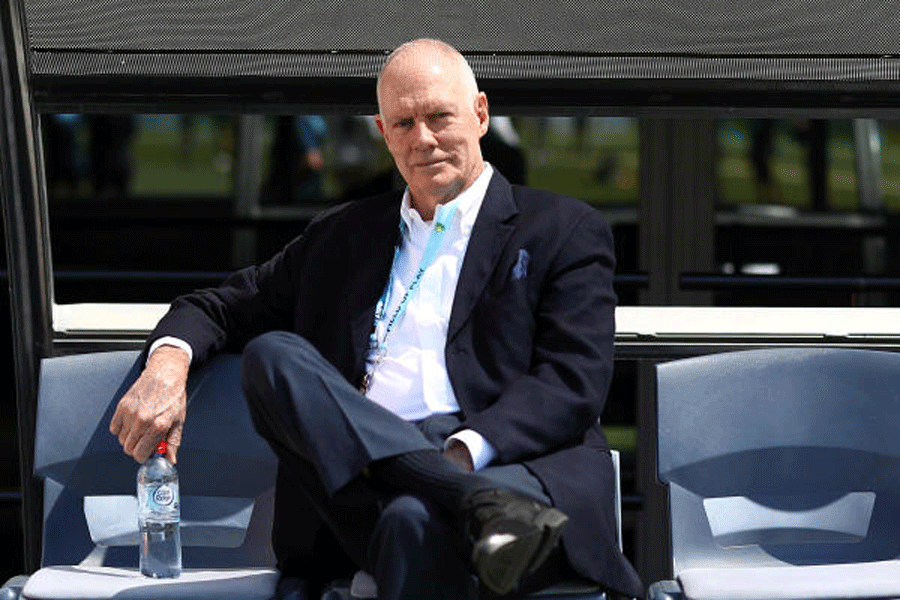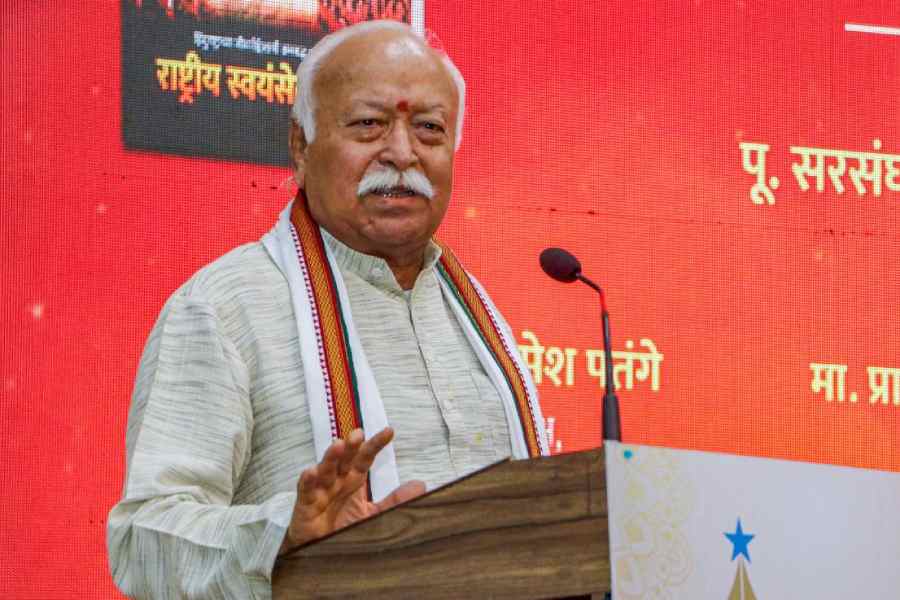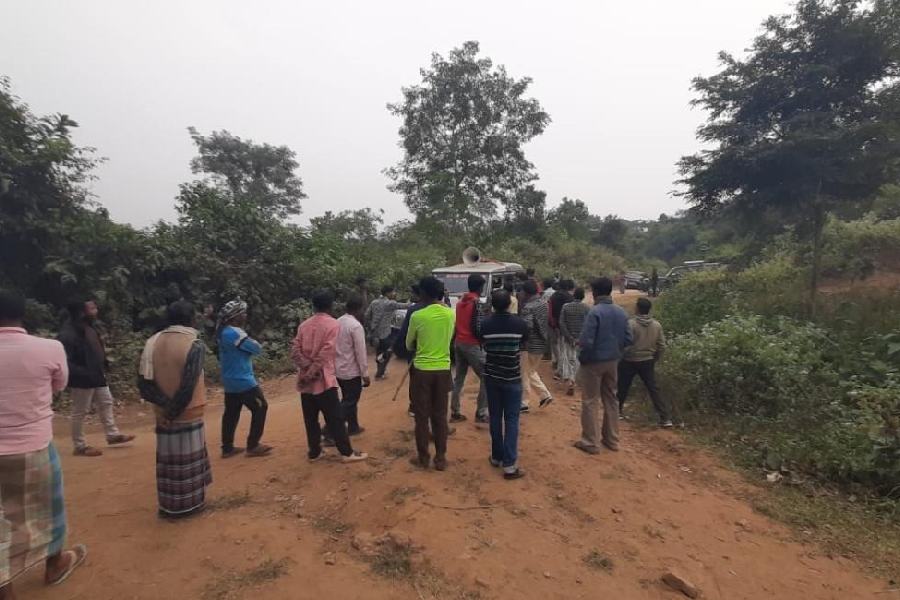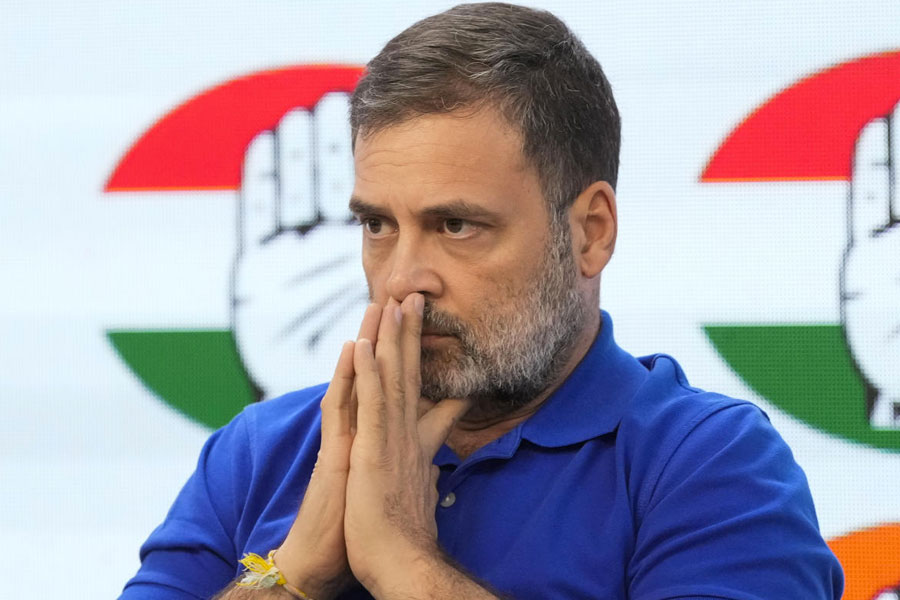Be it the humanist realism of Deviprasad Roy Choudhury (picture) or the Mooresque reduction in Prodosh Das Gupta, the sophisticated primitivism of Meera Mukerjee or the teasing abstraction in Sushen Ghosh, modern Indian sculpture has lived off and thrived on forays into different aesthetic sources. Tracking its Shifting Horizons in terms of divergent expressions, Birla Academy’s recent sculpture show — held on the lawn from its own handsome collection — paused at the stylistic milestones set up over several decades. Of the trends emphasised, the Rodinesque fidelity to evocative physical details was also reflected in Ajit Chakraborty, represented by a bronze head. As Henry Moore and Jean Arp entered the Indian sculptural lexicon, their impact became apparent on Amarnath Sehgal, Biman Bihari Das, K.V. Jena, Girish Bhatt and, occasionally, on Sarbari Roy Chowdhury.
Meanwhile, Expressionist deviations and the granular texture of Birbhum’s laterite soil would announce an idiosyncratic genius at work in Santiniketan. The two Ramkinkar Baij sculptures, cast in bronze, were tributes to Gandhi and Tagore. The famous Tagore bust appeared to suggest how the epiphanic philosophy of “Akash bhora” had ended in the existential despair of “pelona uttor”. Baij’s masterpiece, The Santhal Family, was an inspiration for the pieces by Surajit Das and C.S.N. Patnaik. Another genius, Somnath Hore, who had minimised figures into hollow, primordial forms, though not included in the show, surfaced in Rishi Barua’s and Tarak Garai’s battered scraps of bronze.
If Adivasi Female of B. Vithal recalled the confidence of Mohenjodaro’s Dancing Girl in her unabashed pagan nakedness, it was enduring folk and tribal visual dialects that sustained P.V. Janakiram and S. Nandagopal, and stimulated Rohini Reddy’s dialogue with the dokra tradition. Niranjan Pradhan’s debt to African carving was also clear in his linear, unfussy woman’s torso. Apart from C. Dakshinamoorthy’s thoughtful head, Pankaj Panwar’s aggressive rooster, Sheo Shankar Prasad’s loiterer, Janak Jhankar Narzary’s wry squint at Self-Love and Vivan Sundaram’s installation stayed with the viewer as well.

